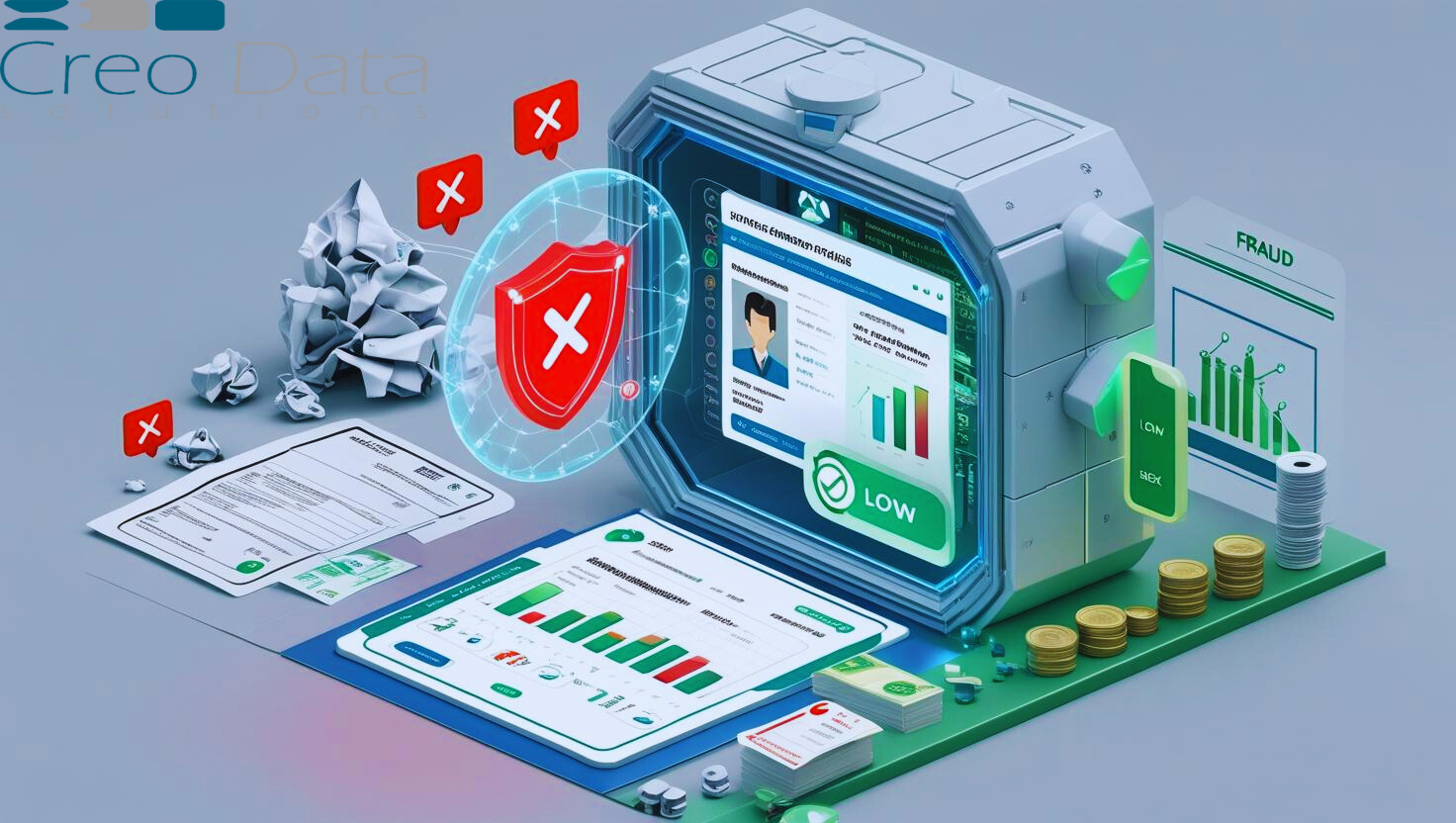RM Review: Streamlining Loan Origination with Relationship Manager Oversight
Introduction
In modern lending operations, one of the key control and quality assurance steps is the RM Review process: Relationship Managers (RMs) evaluate customer details and supporting documents before advancing proposals to credit or underwriting. As lending becomes more automated and process-driven, embedding RM Review as a discrete workflow stage helps balance speed with human judgment, risk control, and customer experience.
In the context of a loan management or lending platform such as Creodata's Loan Management System, RM Review is a built-in feature under the "RM Role" component in the Workflow & Proposal module. This article explores the RM Review use case in depth—its workflows, benefits, technical considerations, and how Creodata supports it—then outlines the target audience and best practices.
Workflow: How RM Review Typically Works
Below is a representative workflow for RM Review in a lending system:
1. Customer application & document submission
The customer (or agent) submits the loan application form along with required supporting documents (income proof, bank statements, identity documents, collateral valuations, KYC, etc.).
2. Automated pre-checks / data capture
The system runs initial validations: data completeness, format checks, matching against KYC databases, credit bureau fetch, etc. This reduces the burden on RMs by filtering out obviously flawed proposals early.
3. Assignment to RM Review queue
Based on the product type, branch, or customer segment, the proposal lands in the RM's task queue. The RM is notified (via dashboard, email, or task tile).
4. RM inspects customer and documents
The RM accesses the full customer profile, document repository, credit bureau data, and any derived metrics. The RM can view discrepancies, verify authenticity (e.g. via checksums or external APIs), and assess whether the supporting documents meet policy requirements.
5. Notes, comments, and feedback
If the RM finds missing or inconsistent data, they may flag issues, leave comments, or request re-submission. The system should allow side-by-side comparison, versioning, and tracking of feedback loops.
6. Pre-approval / acceptance or rejection
After review, the RM may mark the proposal as acceptable to forward to underwriting/credit committee, or reject/return to the front office for correction.
7. Hand-off to next stage (credit / underwriting / approval)
If accepted, the proposal flows to the next stage. All RM annotations and assessments remain attached for traceability.
8. Audit, escalation, and oversight
Supervisors or audit roles may review RM decisions (especially rejections or exceptions). Metrics on RM turnaround times, rejection rates, and issue patterns can feed dashboards.
In a robust loan management system, all these steps are configurable, auditable, and tied to role-based permissions and SLA timers.
Why RM Review Matters: Use Case Advantages
Including an RM Review stage in the proposal workflow offers several benefits:
1. Improved data quality & fewer errors downstream
By having a human check data and documents before they enter credit, many issues (missing pages, mismatches, invalid signatures) get caught early, reducing back-and-forth and rework.
2. Risk mitigation and consistency
RMs serve as the first line of judgment—ensuring that proposals align with credit policy, customer history, and risk appetite. Their domain knowledge helps filter proposals before they reach resource-intensive credit review.
3. Efficiency gains and throughput
Because some trivial problems are caught earlier, underwriting and approval teams spend less time dealing with incomplete or low-quality proposals. This speeds end-to-end processing.
4. Accountability, transparency & audit trail
The RM Review stage ensures that each proposal's integrity is traceable. Comments, edits, and decisions are logged. This is crucial for compliance and postmortem audit.
5. Better customer experience
Faster rejections or clarifications—if done in a controlled workflow—reduce delays. Also, RMs can add context or touchpoints (calls, messages) when clarifications are needed, improving communication.
6. Scalable governance
As the institution grows, the RM Review role provides a scalable governance layer—without resorting to manual spreadsheets or email loops. It ensures standards are maintained across branches or product lines.
How Creodata's Loan Management System Supports RM Review
Creodata's Loan Management System (LMS) is a cloud-based, end-to-end lending platform built on Microsoft Azure. Let's see how RM Review fits into and benefits from Creodata's architecture and features.
Key relevant features of Creodata LMS
-
Customizable workflows / multi-level approval hierarchies: Creodata allows institutions to define multi-stage flows (including RM Review) tailored to their policy and structure.
-
Role-based access & permissions: Fine-grained permissions ensure RMs see and act only on the tasks assigned to them, and control what they can view, comment, edit, or escalate.
-
Document management & versioning: The system supports storing, indexing, and version control of uploaded supporting documents, making RM verification processes smoother.
-
Real-time dashboards, metrics & reporting: Creodata provides analytics on workflow performance, bottleneck identification, RM turnaround times, rejection rates, etc.
-
Integration & APIs: Through connectors (to KYC / identity services, credit bureaus, payment gateways), the RM can validate or cross-check documents in real time within the same UI.
-
Audit trails and compliance readiness: Every action—views, edits, rejections, comments—is logged and timestamped for audit, regulatory, and quality control.
-
Configurable loan products & rules: Because Creodata supports multiple loan types, interest computation methods, and fee structures, RMs can validate proposals against product rules.
Given these capabilities, the RM Review stage in Creodata's system is not an afterthought but a first-class citizen in the workflow engine.
Sample RM Review in Creodata context
Let's imagine a microfinance institution using Creodata:
- A customer completes a digital loan application and uploads scanned documents via a web portal linked to Creodata.
- The system does initial KYC checks and credit bureau fetch.
- The proposal is assigned to an RM in branch A.
- The RM uses Creodata's interface to examine the application, sees that the bank statements are missing the latest month, and flags the task with a comment requesting the missing statement.
- The front office re-submits with the missing document. The RM re-opens the task, verifies the new document, then forwards the proposal to underwriting.
- The dashboard shows that RM X has a 90% first-pass approval rate, with average review time of 45 minutes. Supervisors can view which branches have higher rejection rates, and identify training needs.
Because everything is managed centrally on Creodata, nothing is lost in email threads or informal feedback loops.
Target Audience
Which types of organizations and user roles most benefit from embedding RM Review in a lending workflow supported by Creodata?
Institutional segments
-
Small banks and microfinance institutions: These often lack sophisticated credit desks or automated underwriting engines. The RM Review stage offers a safety net and quality control layer in growing operations. Creodata markets itself to small banks and microfinance institutions.
-
SACCOs, credit unions, cooperatives: Member-based lenders with moderate loan volumes, who rely on personal relationships. RMs play an essential role in evaluating members, so the RM Review feature is especially relevant. Creodata explicitly mentions SACCOs.
-
Regional or branch-based lenders: Institutions with multiple branches, each with RMs, benefit from centralized control while preserving local decision oversight.
-
Digital lenders with hybrid models: Even in digital-first lending, having an RM oversight layer provides a human guardrail for edge cases, fraud detection, or high-value deals.
-
Fintechs scaling into more formal credit processes: As fintechs mature, they often evolve from pure algorithmic underwriting to hybrid models. RM Review is a natural intermediate step.
Summary & Recommendations
In summary:
- RM Review is a critical workflow stage in loan origination where Relationship Managers evaluate the customer details and supporting documents before proposals move further toward underwriting or approval.
- It enhances data quality, risk control, efficiency, and accountability.
- Creodata's Loan Management System supports RM Review robustly through workflow configuration, document management, role-based access, audit trails, dashboards, and integrations.
- The primary target audience includes small banks, microfinance institutions, SACCOs, fintechs scaling lending operations, and branch-based lending organizations.
- To succeed, organizations need clear checklists, escalation rules, performance metrics, UIs optimized for RM tasks, and governance oversight.



